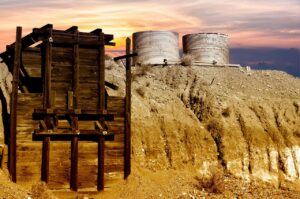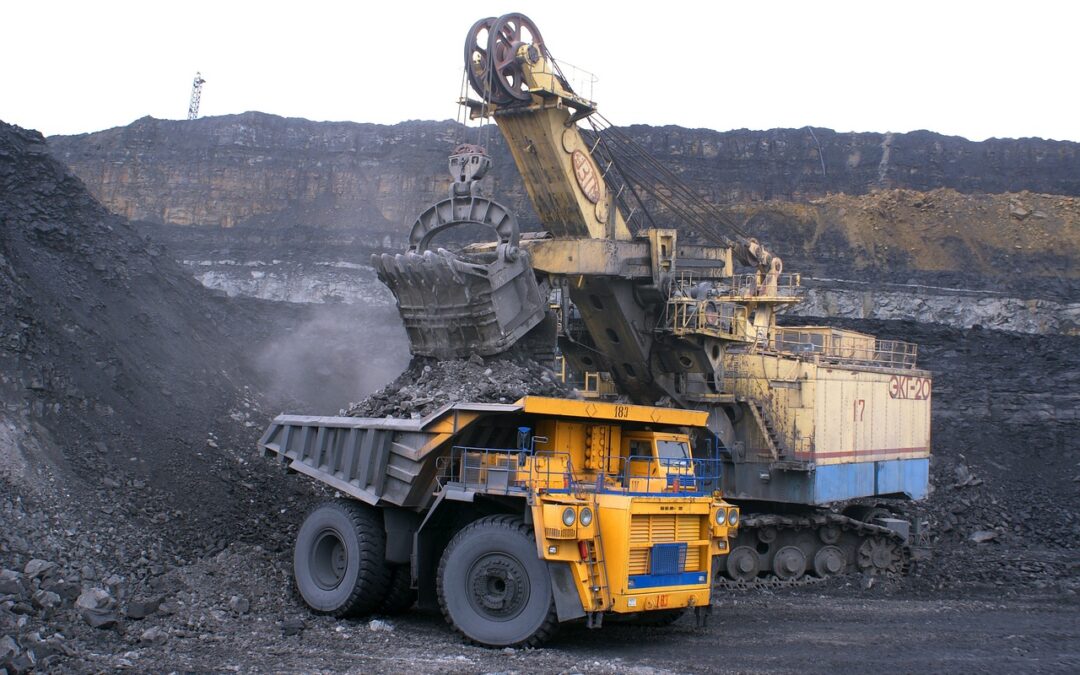Mountaintop removal mining (MTR) is one of the most controversial methods of mining. While it is highly effective for resource extraction, it raises significant environmental and societal concerns. In this article, we will explore the process, objectives, and consequences of mountaintop removal mining, along with the regulations, alternatives, and future of this mining technique.
What is Mountaintop Removal Mining?
Mountaintop removal mining is a method of mining used primarily for coal extraction. It involves the removal of entire mountain tops to access coal seams underneath. The technique has been predominantly used in the Appalachian region of the United States. The mining process includes blasting away large sections of the mountain to expose the coal deposits, followed by the removal of the coal, and then the disposal of the waste material in nearby valleys.
This method allows for easier access to coal, which would otherwise be difficult to reach using traditional underground mining techniques. However, mountaintop removal mining has drawn significant criticism for its environmental impacts, including habitat destruction, water pollution, and air quality degradation.
What are the Main Objectives of Mountaintop Removal Mining?
The primary objective of mountaintop removal mining is to extract coal efficiently from regions that are difficult to mine through other means. By removing the entire top of a mountain, mining companies can access large coal seams in a way that is faster and less expensive than traditional underground mining.
Additionally, mountaintop removal mining is aimed at increasing production rates and reducing costs. This makes coal extraction more profitable for mining companies. The technique also allows for the extraction of coal from seams that would otherwise be too expensive to mine.
What is the Process of Mountaintop Removal Mining?
The process of mountaintop removal mining can be broken down into several key steps:
Site Preparation
The first step is clearing the area for mining. This includes removing vegetation, trees, and any other natural resources in the area. Roads are often built to access the mountaintop, and the land is cleared of obstacles to make way for explosives.
Blasting
Once the site is prepared, blasting is used to break apart the rock and soil above the coal seam. Large explosives are detonated to remove the upper layers of the mountain, making it easier to access the coal beneath. This is one of the most damaging parts of the process, as it can result in landslides, dust, and airborne pollutants.
Coal Extraction
After the blasting, heavy machinery is used to extract the coal. This often involves large draglines or shovels that can move massive amounts of earth to reach the coal deposits. The extracted coal is then transported via conveyor belts or trucks to processing plants.
Waste Disposal
The waste material, or “overburden,” that is removed during blasting is often discarded in nearby valleys or water bodies, which can lead to the contamination of local ecosystems. The waste is typically made up of rock, dirt, and other materials that are left behind after the coal is removed.
Reclamation
After the coal has been extracted, the area is often reclaimed by attempting to restore the land to its natural state. This can include replanting vegetation, stabilizing slopes, and restoring waterways. However, the effectiveness of these reclamation efforts is often debated.
How Has the Process of Mountaintop Removal Mining Evolved Over Time?
Over the years, mountaintop removal mining has evolved from a less regulated, more destructive practice to one that is increasingly subject to oversight. Initially, the process was less efficient and involved fewer safety measures. Over time, technological advances have made it more effective, such as the development of better machinery and explosive techniques.
However, as the environmental consequences of mountaintop removal mining became more apparent, regulators and environmentalists began to push for stricter guidelines and better reclamation methods. Despite these efforts, the core process has remained relatively unchanged, and its environmental toll is still significant.
Why is Mountaintop Removal Mining Often Considered Controversial?
Mountaintop removal mining is highly controversial because it has significant environmental and social impacts. One of the most prominent concerns is the destruction of ecosystems, as entire mountain ranges are flattened, eliminating habitats for wildlife. Furthermore, the practice generates massive amounts of waste that are often dumped into valleys and streams, leading to water contamination.
In addition, the noise and dust from the mining process can negatively affect nearby communities, leading to health concerns. Many people living in areas affected by MTR face higher rates of respiratory illnesses, as well as concerns about the long-term viability of their communities due to economic and environmental degradation.
What are the Environmental Consequences of Mountaintop Removal Mining on Local Ecosystems?
The environmental impact of mountaintop removal mining is profound. The blasting and excavation that take place in this process disturb large areas of land, often causing permanent damage to ecosystems.
Key environmental consequences include:
- Loss of biodiversity: Removing mountain ecosystems destroys the habitat of countless species of animals, plants, and insects.
- Water contamination: The waste material from the mining process often contains toxic substances that seep into rivers and streams, contaminating local water supplies.
- Air pollution: The dust created by blasting and hauling operations can pollute the air and contribute to health issues in nearby communities.
- Soil erosion: After the mountain is removed, the soil becomes highly susceptible to erosion, making it difficult for vegetation to grow back and stabilizing the landscape.
How Does Mountaintop Removal Mining Affect Local Communities and Their Health?
Mountaintop removal mining has several negative effects on the health and well-being of local communities. In particular, the pollution generated by the mining process can have long-term consequences for residents.
Health issues in areas affected by MTR include:
- Respiratory problems: The dust from blasting and excavation can cause respiratory diseases, including asthma and bronchitis.
- Water contamination: Polluted water can lead to a variety of health problems, from gastrointestinal issues to more serious diseases caused by exposure to heavy metals and toxins.
- Mental health: The stress of living near mining operations, coupled with fears about the future of their land and livelihoods, can affect the mental health of residents.
Public Perception of Mountaintop Removal Mining
Public perception of mountaintop removal mining is highly polarized. Supporters argue that the method provides a necessary economic benefit by providing jobs and energy resources. On the other hand, critics highlight its destructive environmental impact, particularly on biodiversity and water systems. Advocacy groups, including environmental organizations, often call for stricter regulations or an outright ban on the practice.
What are the Federal and State Regulations Governing Mountaintop Removal Mining in the United States?
Mountaintop removal mining is subject to both federal and state regulations. The Clean Water Act, the Surface Mining Control and Reclamation Act (SMCRA), and the National Environmental Policy Act (NEPA) are the primary federal laws governing the practice. These regulations aim to minimize environmental impacts and ensure that mines are properly reclaimed after extraction.
States such as West Virginia, Kentucky, and Tennessee have additional regulations in place to oversee mining activities. However, enforcement of these laws can vary significantly from state to state, with some regions being more lenient in granting permits for MTR operations.
How do Policy and Legal Frameworks Influence the Practice of Mountaintop Removal Mining?
Legal and policy frameworks have a significant influence on mountaintop removal mining. Policies set by federal and state governments regulate how mining operations are carried out, including permitting, land use, and waste disposal.
Legal challenges from advocacy groups have also had an impact on the practice, often resulting in changes to the way mines are managed and reclaimed. These legal battles reflect the broader debate about the economic benefits of MTR versus its environmental and social costs.
What are Some Proposed Alternatives to Mountaintop Removal Mining That Could Reduce Environmental Damage?
Several alternatives to mountaintop removal mining have been proposed to reduce its environmental impact:
- Underground mining: Although more costly, underground mining is less destructive to the surface and can be used for deeper coal seams.
- Contour mining: This method involves cutting into the side of the mountain rather than removing the entire top.
- Sustainable energy: Transitioning from coal to renewable energy sources, such as wind and solar, could reduce the need for coal extraction altogether.
Can Technology Help Mitigate the Negative Impacts of Mountaintop Removal Mining?
Technological advancements have the potential to reduce the negative impacts of mountaintop removal mining. For example, improvements in blasting techniques can reduce the amount of dust and vibrations produced. Similarly, advances in reclamation technology could help restore ecosystems more effectively after mining operations.
However, despite these advancements, the fundamental environmental challenges of MTR remain significant, and many advocates call for the complete cessation of this mining method.
What are the Potential Benefits of Transitioning to More Sustainable Mining Practices?
Transitioning to more sustainable mining practices could offer several benefits:
- Reduced environmental impact: Sustainable methods reduce habitat destruction, water contamination, and air pollution.
- Healthier communities: By reducing the environmental consequences, local communities would face fewer health risks.
- Long-term economic stability: Shifting toward renewable energy and sustainable mining could provide a more stable economic future, reducing dependence on finite resources like coal.

The Future of Mountaintop Removal Mining and Its Impact on the Environment and Communities
The future of mountaintop removal mining is uncertain. As awareness of its environmental and social costs grows, the pressure for more sustainable and responsible mining practices increases. While the method has provided economic benefits, its long-term effects on ecosystems and communities are difficult to ignore.
By exploring alternatives, improving reclamation techniques, and supporting sustainable practices, the industry could mitigate some of the damage caused by mountaintop removal mining. Ultimately, the future of this mining method will depend on finding a balance between resource extraction and environmental preservation.

